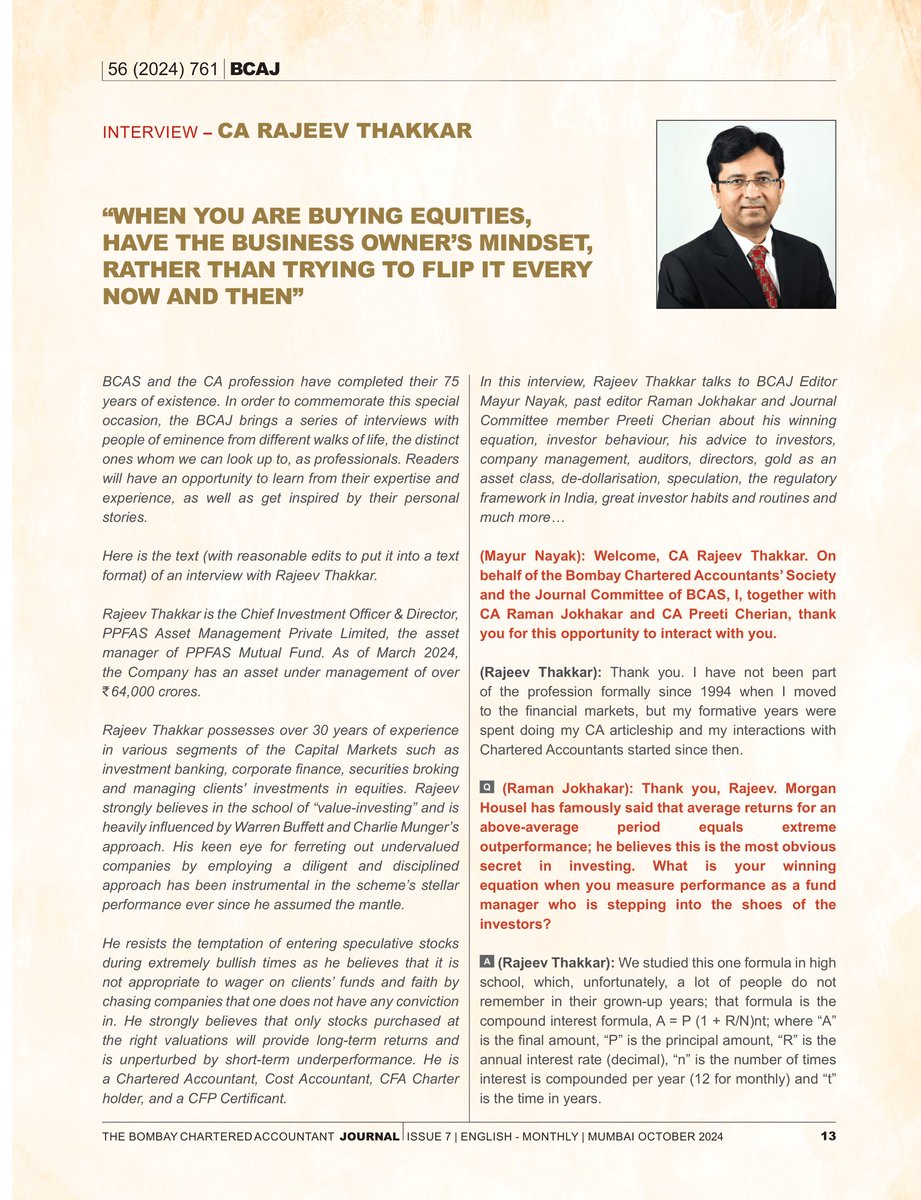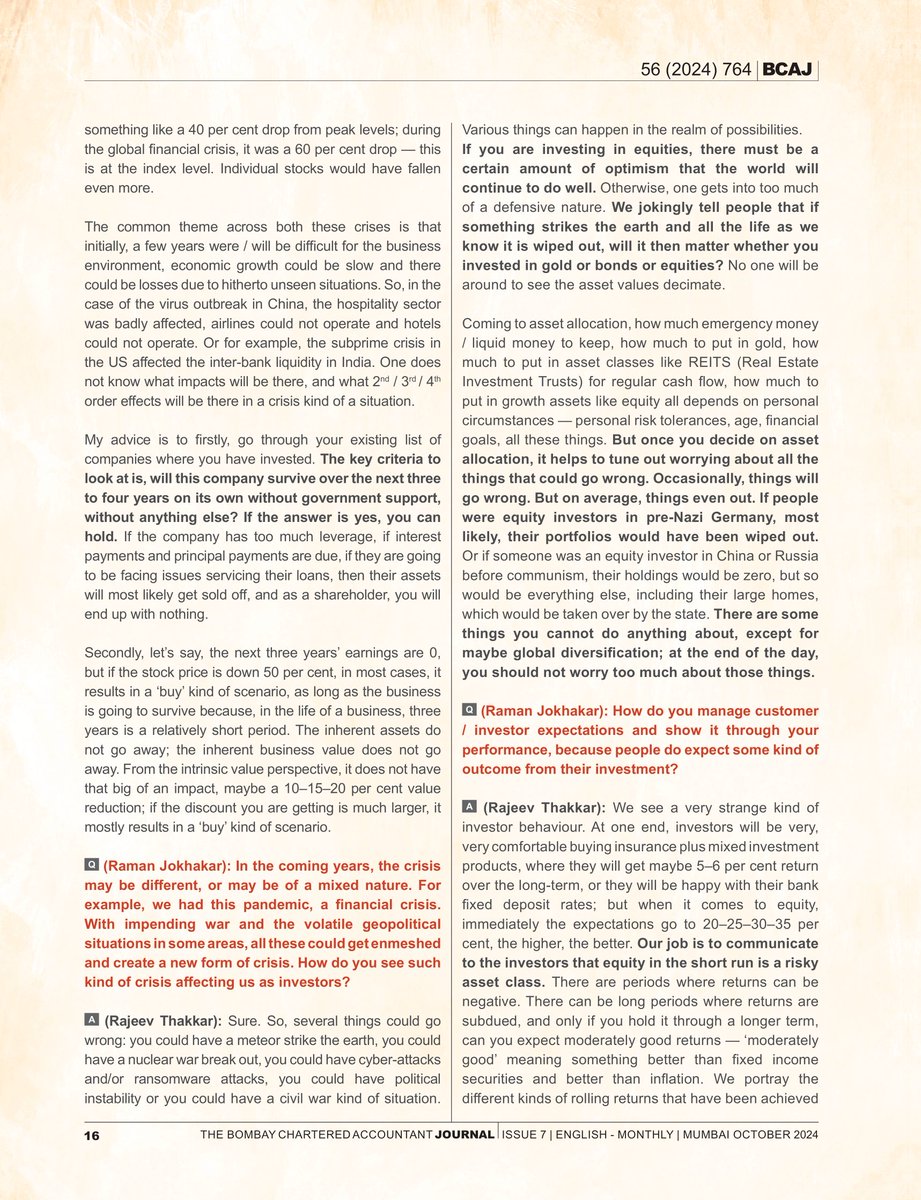Mega Thread on History of HDFC Bank
The HDFC Bank was incorporated on August 1994 by the name of 'HDFC Bank Limited', with its registered office in Mumbai, India. HDFC Bank commenced operations as a Scheduled Commercial Bank in January 1995.
The Housing Development Finance Corporation (HDFC) was amongst the first to receive an 'in principle' approval from the Reserve Bank of India (RBI) to set up a bank in the private sector, as part of the RBI's liberalization of the Indian Banking Industry in 1994.
HDFC Bank is headquartered in Mumbai. The Bank at present has an enviable network of over 1416 branches spread over 550 cities across India. All branches are linked on an online real–time basis.
Customers in over 500 locations are also serviced through Telephone Banking. The Bank also has a network of about over 3382 networked ATMs across these cities.
The promoter of the company HDFC was incepted in 1977 is India's premier housing finance company and enjoys an impeccable track record in India as well as in international markets.
HDFC has developed significant expertise in retail mortgage loans to different market segments and also has a large corporate client base for its housing related credit facilities.
With its experience in the financial markets, a strong market reputation, large shareholder base and unique consumer franchise, HDFC was ideally positioned to promote a bank in the Indian environment.
The shares are listed on the Bombay Stock Exchange Limited and The National Stock Exchange of India Limited.
The Bank's American Depository Shares ( ADS ) are listed on the New York Stock Exchange (NYSE) under the symbol 'HDB' and the Bank's Global Depository Receipts (GDRs) are listed on Luxembourg Stock Exchange.
On May 23, 2008, the amalgamation of Centurion Bank of Punjab with HDFC Bank was formally approved by Reserve Bank of India to complete the statutory and regulatory approval process.
As per the scheme of amalgamation, shareholders of CBoP received 1 share of HDFC Bank for every 29 shares of CBoP.
The merged entity now holds a strong deposit base of around Rs. 1,22,000 crore and net advances of around Rs. 89,000 crore.
The merged entity now holds a strong deposit base of around Rs. 1,22,000 crore and net advances of around Rs. 89,000 crore.
The balance sheet size of the combined entity would be over Rs. 1,63,000 crore. The amalgamation added significant value to HDFC Bank in terms of increased branch network, geographic reach, and customer base, and a bigger pool of skilled manpower.
In a milestone transaction in the Indian banking industry, Times Bank Limited (another new private sector bank promoted by Bennett, Coleman & Co. / Times Group) was merged with HDFC Bank Ltd., effective February 26, 2000.
This was the first merger of two private banks in the New Generation Private Sector Banks. As per the scheme of amalgamation approved by the shareholders of both banks and the Reserve Bank of India, shareholders of Times Bank received 1 share of HDFC
Bank for every 5.75 shares of Times Bank.
HDFC Bank offers a wide range of commercial and transactional banking services and treasury products to wholesale and retail customers. The bank has three key business segments:
HDFC Bank offers a wide range of commercial and transactional banking services and treasury products to wholesale and retail customers. The bank has three key business segments:
Wholesale Banking Services – The Bank's target market ranges from large, blue–chip manufacturing companies in the Indian corporate to small & mid–sized corporates and agri–based businesses.
Retail Banking Services – The objective of the Retail Bank is to provide its target market customers a full range of financial products and banking services, giving the customer a one–stop window for all his/her banking requirements.
Treasury – Within this business, the bank has three main product areas – Foreign Exchange and Derivatives, Local Currency Money Market & Debt Securities, and Equities. The Treasury business is responsible for managing the returns and market risk on this investment portfolio.
HDFC Securities (HSL) and HDB Financial Services (HDBFSL) are its subsidiaries.
Services offered by the company:
Personal Banking
Accounts & Deposits
Loans
Cards
Forex
Investments & Insurance
Services offered by the company:
Personal Banking
Accounts & Deposits
Loans
Cards
Forex
Investments & Insurance
NRI Banking
Accounts & Deposits
Remittances
Investments & Insurance Loans Payment Services
Wholesale Banking
Corporate
Small & Medium Enterprises
Financial Institutions & Trusts
Government Sector
Sources : NDTV Site
Accounts & Deposits
Remittances
Investments & Insurance Loans Payment Services
Wholesale Banking
Corporate
Small & Medium Enterprises
Financial Institutions & Trusts
Government Sector
Sources : NDTV Site
Hope you all like it
@BaluGorade @dmuthuk @singhanoop1985 @Vivek_Investor @FinMedium @AnishA_Moonka @adi2five @RichifyMeClub @SmartSyncServ @Gautam__Baid @FI_InvestIndia @SwarnashishC @ms89_meet @investometry
@BaluGorade @dmuthuk @singhanoop1985 @Vivek_Investor @FinMedium @AnishA_Moonka @adi2five @RichifyMeClub @SmartSyncServ @Gautam__Baid @FI_InvestIndia @SwarnashishC @ms89_meet @investometry
• • •
Missing some Tweet in this thread? You can try to
force a refresh































